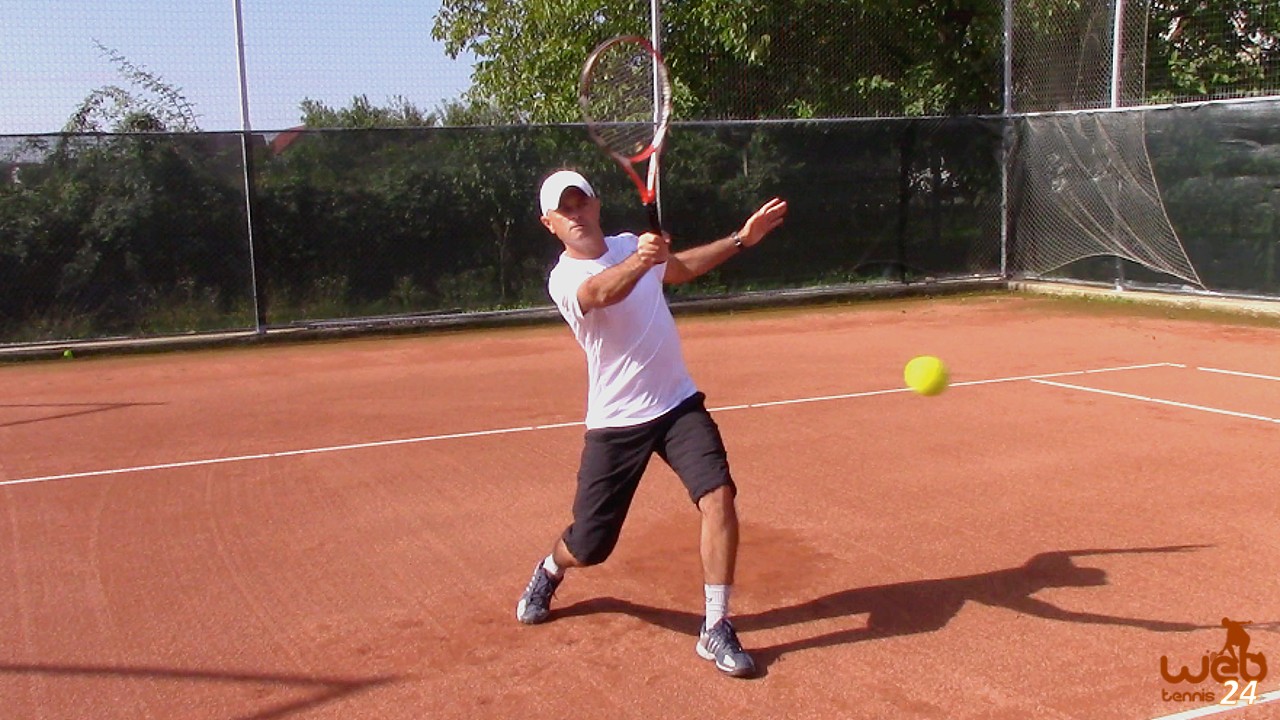One opportunity to attack and be aggressive in tennis is when the ball lands mid-court at a pace that allows the player to step inside the baseline and set up with their most aggressive wing (which is, for most players, the forehand).
The ball that lands in your court anywhere around the service line at a slow to medium pace should be taken advantage of.
Considering the shorter court you have ahead of you and the net is taken into account, you should have two main tasks on your mind: clear the net and make the ball roll into the opponent’s court.
For that, you need to think: “Up and Over”…
“Up” is for getting the racquet under and lifting it against the back of the ball so that, as a result, it clears the net.
“Over” is for rolling the racquet over the top of the ball for extra spin – this (extra rotation of the ball) will bring the ball down into the court.
You might say that the contact between the racquet and ball is so short that it will be impossible to achieve the two tasks. Indeed, unless…
You visualize your racquet doing it and then letting it happen.
Many players fear swinging hard on the short ball because of the possibility of hitting it too deep. But if you practice visualizing the “up and over” technique you’ll become more confident to go for your shots when closer to the net.
By the way: technically, the finish/follow-through for the “up and over” swing is a low one – at the waist or non-dominant hip level.
Apply this (mental) technique first in practice by using either a ball machine (set it to feed the ball slow and short into the court), a practice partner, or doing it yourself by tossing the ball in front of you (while standing at the service line).
One more word of caution: make sure you keep the arm and wrist relaxed and do not go for too much power from the beginning.

Cosmin Miholca
Certified Tennis Coach
Check out my work at WebTennis24 where I share with you my best video tennis lessons, drills and tips for players, coaches and tennis parents.


0 Comments